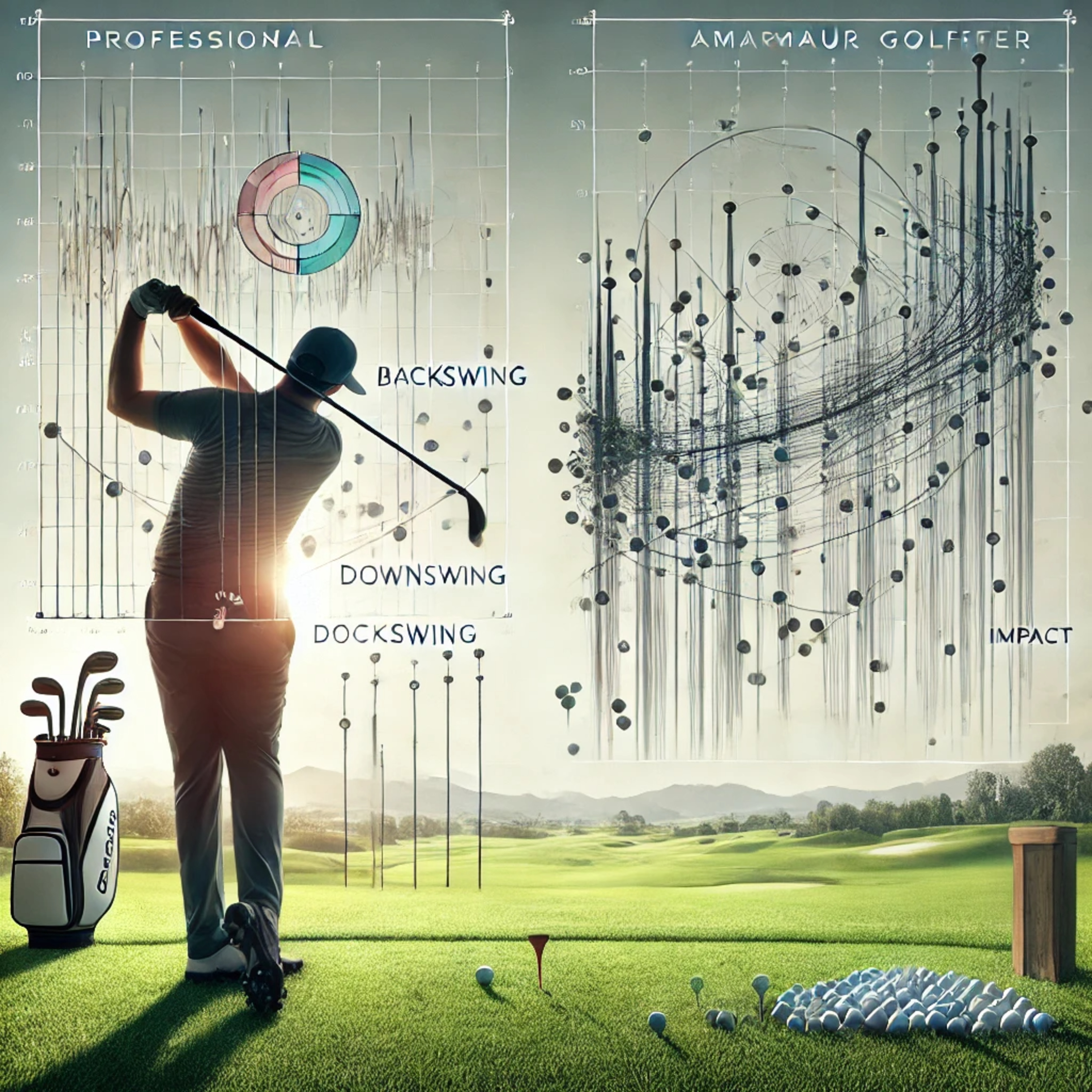#135 Grip Pressure and Golf Performance
- Author
- Golf247.eu
- Published
- Thu 13 Feb 2025
- Episode Link
- https://podcasters.spotify.com/pod/show/puttin-pro/episodes/135-Grip-Pressure-and-Golf-Performance-e2u36b5
The Podcast analyzes the grip pressure of golfers during their swing, distinguishing between tour professionals and amateurs. Professionals exhibit a dual pressure increase: one just before the transition and another before the strike, while amateurs show a continuous pressure rise until the highest point of the swing. The sharp increase in grip pressure at the beginning of the downswing in slicers is identified as the cause of the clubhead being thrown away. The study is based on pressure measurements during the golf swing. Grip pressure in the golf swing differs significantly between professionals and amateurs, particularly in terms of intensity and dynamics throughout the swing.
- Professional Golfers: According to the source, tour professionals apply a much higher grip pressure at setup, about twice as strong compared to their maximum capacity. It is estimated that an amateur would need to exert a grip pressure of about 8/10 to match the pressure of a professional at setup. During the swing, professionals exhibit a unique "double peak." They increase pressure shortly before the end of the backswing to stop the club and change direction. Then the pressure decreases until it rises again when reaching the position where the arm and shaft are parallel, relaxing again just before contact.
- Amateur Golfers: In contrast, amateurs, particularly slicers, start with very low grip pressure. This pressure gradually increases during the backswing until the end of the backswing. In the downswing, there is a sharp pressure increase over the top of the shaft, which, according to the source, results in the clubhead being "thrown away." Amateurs tend to continuously increase grip pressure, while professionals display a controlled pattern with pressure peaks.
In summary, professionals have a much higher initial pressure and vary this dynamically during the swing with two peaks. Amateurs, on the other hand, start with little pressure and continuously increase it until the end of the backswing, followed by a sudden increase in the downswing. These differing grip pressure patterns influence club movement and the resulting strokes. The progression of grip pressure among professional golfers during the swing is characterized by a dynamic pattern with two distinct peaks. Here is a detailed description based on the sources:
- Setup:Tour professionals begin with very high grip pressure in the setup, which is about twice as high as their maximum capacity. An amateur would need a grip pressure of approximately 8/10 to reach this pressure.
- Backswing: Just before reaching the end of the backswing, there is the first pressure increase. This increase is meant to stop the club and prepare the direction for the downswing.
- Pressure Decrease: After this first peak, the grip pressure decreases.
- Downswing: Upon reaching the position where the leading arm and shaft are parallel to the ground, there is a second significant pressure increase. This second peak is an important feature of the professional swing.
- Just Before Contact: Directly before contact, the grip pressure relaxes again.
In conclusion, professional golfers exhibit a pattern of high initial pressure and two distinct pressure peaks during the swing: one just before the end of the backswing and another during the transition to the downswing, followed by relaxation just before contact. This pattern is markedly different from that of amateurs, who continuously increase pressure throughout the swing and show a massive pressure increase in the downswing.
